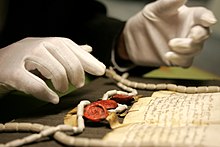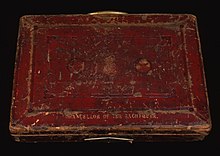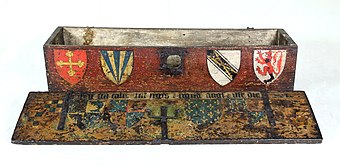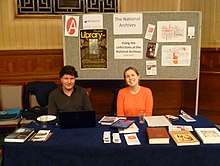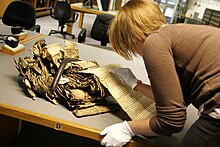
The National Archives and Records Administration (NARA) is an independent agency of the United States government within the executive branch, charged with the preservation and documentation of government and historical records. It is also tasked with increasing public access to those documents that make up the National Archives. NARA is officially responsible for maintaining and publishing the legally authentic and authoritative copies of acts of Congress, presidential directives, and federal regulations. NARA also transmits votes of the Electoral College to Congress. It also examines Electoral College and constitutional amendment ratification documents for prima facie legal sufficiency and an authenticating signature.

The Security Service, also known as MI5, is the United Kingdom's domestic counter-intelligence and security agency and is part of its intelligence machinery alongside the Secret Intelligence Service (MI6), Government Communications Headquarters (GCHQ), and Defence Intelligence (DI). MI5 is directed by the Joint Intelligence Committee (JIC), and the service is bound by the Security Service Act 1989. The service is directed to protect British parliamentary democracy and economic interests and to counter terrorism and espionage within the United Kingdom (UK).
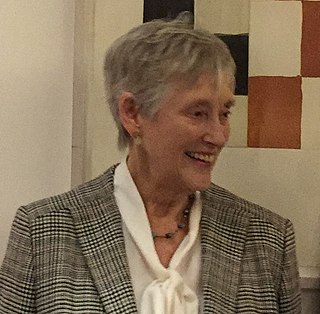
Dame Stella Rimington is a British author and former Director General of MI5, a position she held from 1992 to 1996. She was the first female DG of MI5, and the first DG whose name was publicised on appointment. In 1993, Rimington became the first DG of MI5 to pose openly for cameras at the launch of a brochure outlining the organisation's activities.

The Public Record Office, Chancery Lane in the City of London, was the guardian of the national archives of the United Kingdom from 1838 until 2003, when it was merged with the Historical Manuscripts Commission to form The National Archives, based in Kew. It was under the control of the Master of the Rolls, a senior judge. The Public Record Office still exists as a legal entity, as the enabling legislation has not been modified.
The United States Government Publishing Office is an agency of the legislative branch of the United States Federal government. The office produces and distributes information products and services for all three branches of the Federal Government, including U.S. passports for the Department of State as well as the official publications of the Supreme Court, the Congress, the Executive Office of the President, executive departments, and independent agencies.

An archive is an accumulation of historical records or materials – in any medium – or the physical facility in which they are located.

The Meteorological Office, abbreviated as the Met Office, is the United Kingdom's national weather service. It is an executive agency and trading fund of the Department for Science, Innovation and Technology and is led by CEO Penelope Endersby, who took on the role as Chief Executive in December 2018 and is the first woman to do so. The Met Office makes meteorological predictions across all timescales from weather forecasts to climate change.
The Australian Communications and Media Authority (ACMA) is an Australian government statutory authority within the Communications portfolio. ACMA was formed on 1 July 2005 with the merger of the Australian Broadcasting Authority and the Australian Communications Authority.

The Identity Cards Act 2006 was an Act of the Parliament of the United Kingdom that was repealed in 2011. It created National Identity Cards, a personal identification document and European Economic Area travel document, which were voluntarily issued to British citizens. It also created a resident registry database known as the National Identity Register (NIR), which has since been destroyed. In all around 15,000 National Identity Cards were issued until the act was repealed in 2011. The Identity Card for Foreign nationals was continued in the form of Biometric Residence Permits after 2011 under the provisions of the UK Borders Act 2007 and the Borders, Citizenship and Immigration Act 2009.

The Ministry of Information (MOI), headed by the Minister of Information, was a United Kingdom government department created briefly at the end of the First World War and again during the Second World War. Located in Senate House at the University of London during the 1940s, it was the central government department responsible for publicity and propaganda. The MOI was dissolved in March 1946, with its residual functions passing to the Central Office of Information (COI); which was itself dissolved in December 2011 due to the reforming of the organisation of government communications.

Directgov was the British government's digital service for people in the United Kingdom, which from 2004 provided a single point of access to public sector information and services. The site's portal was replaced by the new GOV.UK website on 17 October 2012, although migration of all services to GOV.UK branding took several years.
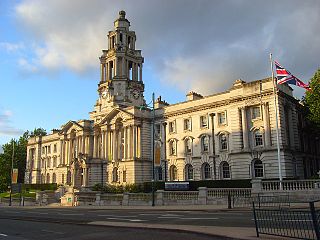
The Metropolitan Borough of Stockport is a metropolitan borough of Greater Manchester in England. It is south-east of central Manchester and south of Tameside. As well as the towns of Stockport, Bredbury and Marple, it includes the outlying villages and suburbs of Hazel Grove, Bramhall, Cheadle, Cheadle Hulme, Gatley, Reddish, Woodley and Romiley. In 2021, it had a population of 295,243, making it the fourth-most populous borough of Greater Manchester.
The National Archives of Scotland (NAS) is the previous name of the National Records of Scotland (NRS), and are the national archives of Scotland, based in Edinburgh. The NAS claims to have one of the most varied collection of archives in Europe. It is the main archive for sources of the history of Scotland as an independent state, her role in the British Isles and the links between Scotland and many other countries over the centuries.

Jonathan Douglas Evans, Baron Evans of Weardale, is a British life peer who formerly served as the Director General of the British Security Service, the United Kingdom's domestic security and counter-intelligence service. He took over the role on the retirement of his predecessor Dame Eliza Manningham-Buller on 21 April 2007. Evans was succeeded by Andrew Parker on 22 April 2013.
Crown copyright is a type of copyright protection. It subsists in works of the governments of some Commonwealth realms and provides special copyright rules for the Crown, i.e. government departments and (generally) state entities. Each Commonwealth realm has its own Crown copyright regulations. There are therefore no common regulations that apply to all or a number of those countries. There are some considerations being made in Canada, UK, Australia and New Zealand regarding the "reuse of Crown-copyrighted material, through new licences".

Archival research is a type of research which involves seeking out and extracting evidence from archival records. These records may be held either in collecting institutions, such as libraries and museums, or in the custody of the organization that originally generated or accumulated them, or in that of a successor body. Archival research can be contrasted with (1) secondary research, which involves identifying and consulting secondary sources relating to the topic of enquiry; and (2) with other types of primary research and empirical investigation such as fieldwork and experiment.
The Foreign and Commonwealth Office Migrated Archives are a collection of about 20,000 files and other records created by the governments of 37 British colonial dependencies, removed to the UK at independence, and held clandestinely for decades in various repositories in and around London. They came only from territories administered by the Colonial Office, so not from India and other dependencies administered by the India Office and its predecessors, whose records are in the India Office Records at the British Library.
The Government of the United Kingdom maintains several intelligence agencies that deal with secret intelligence. These agencies are responsible for collecting, analysing and exploiting foreign and domestic intelligence, providing military intelligence, and performing espionage and counter-espionage. Their intelligence assessments contribute to the conduct of the foreign relations of the United Kingdom, maintaining the national security of the United Kingdom, military planning, public safety, and law enforcement in the United Kingdom. The four main agencies are the Secret Intelligence Service, the Security Service (MI5), the Government Communications Headquarters (GCHQ) and Defence Intelligence (DI). The agencies are organised under three government departments, the Foreign Office, the Home Office and the Ministry of Defence.
Graham Russell Mitchell OBE, CB, was an officer of MI5, the British Security Service, between 1939 and 1963, serving as its deputy director general between 1956 and 1963. In 1963 Roger Hollis, the MI5 director general, authorised the secret investigation of Mitchell following suspicions within the Secret Intelligence Service (MI6) that he was a Soviet agent. It is now thought unlikely that Mitchell ever was a "mole". Mitchell was an International Master of correspondence chess who represented Great Britain.


